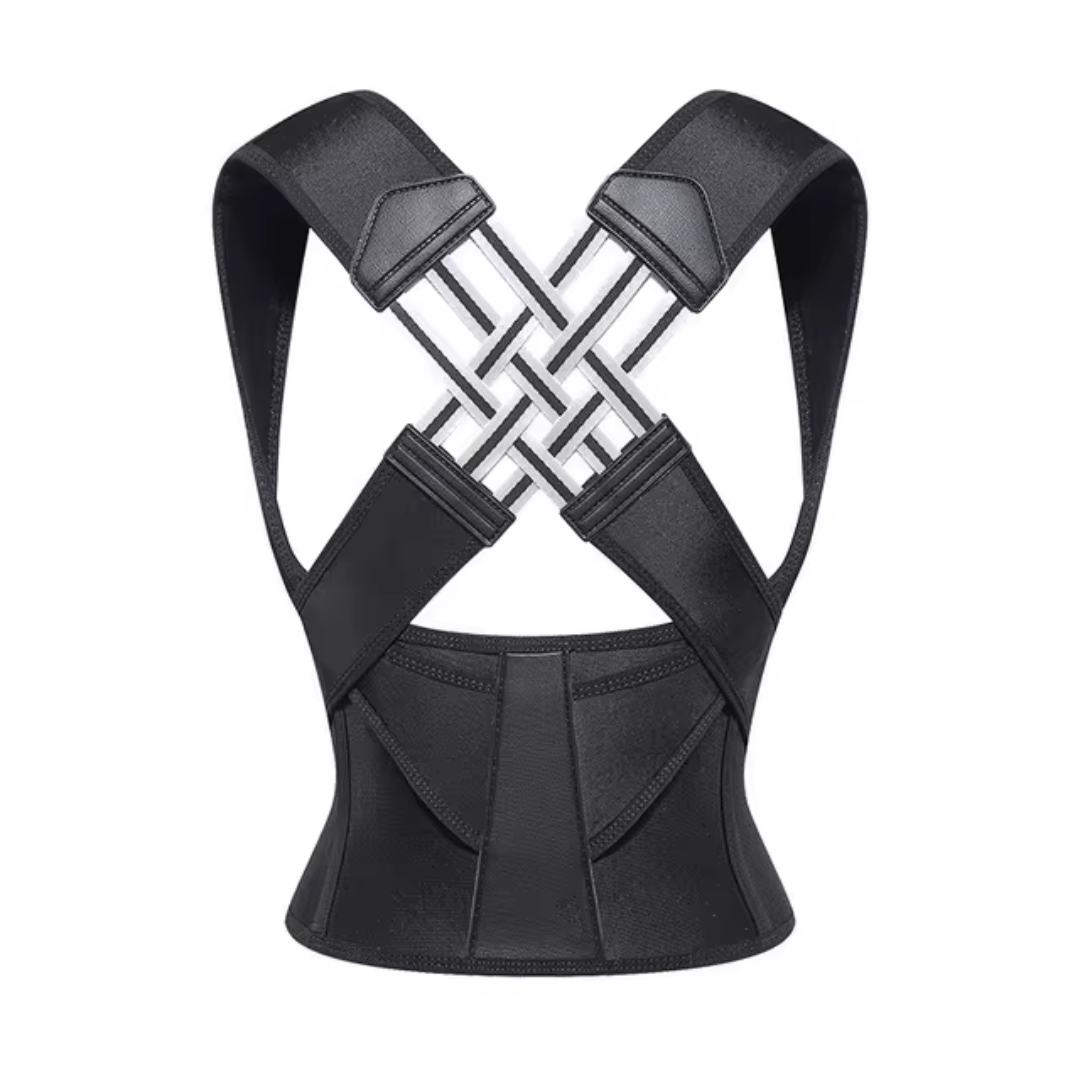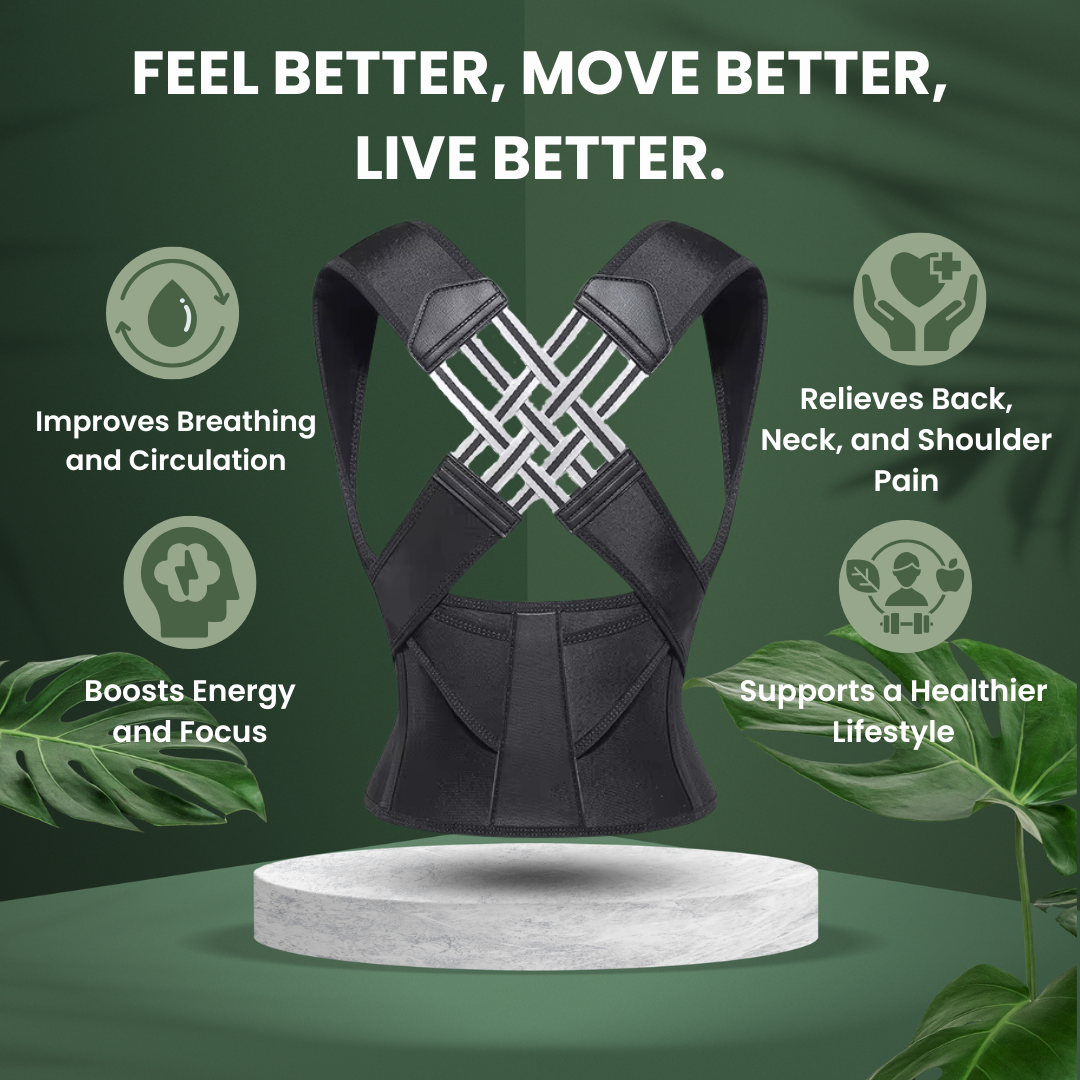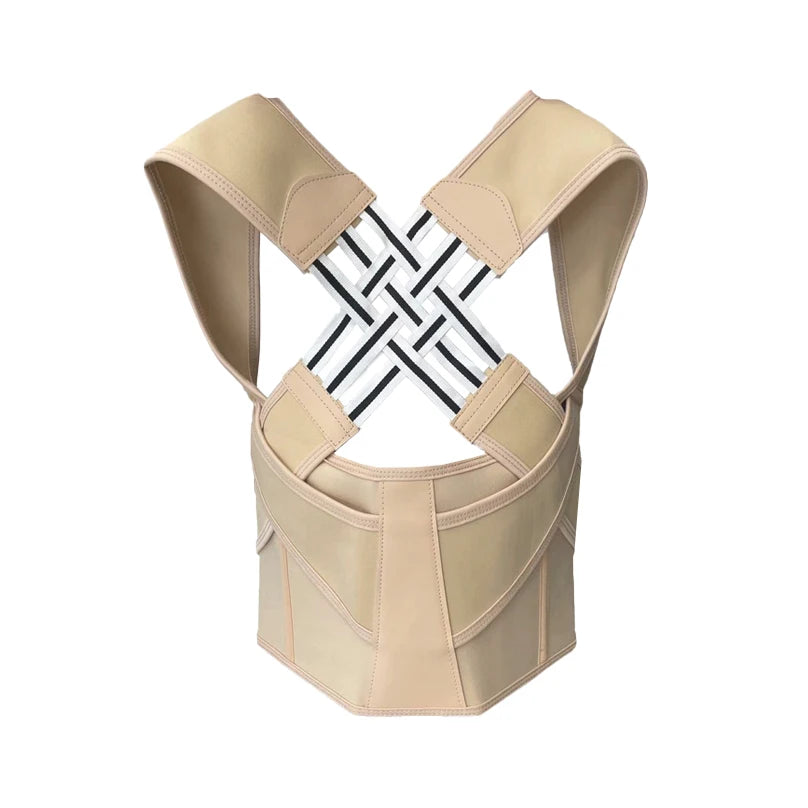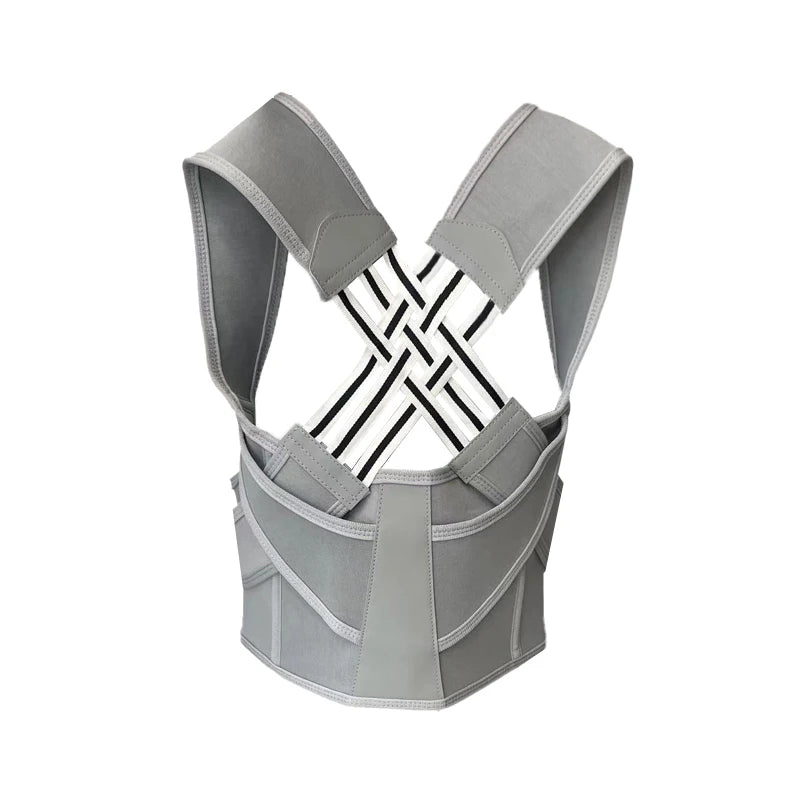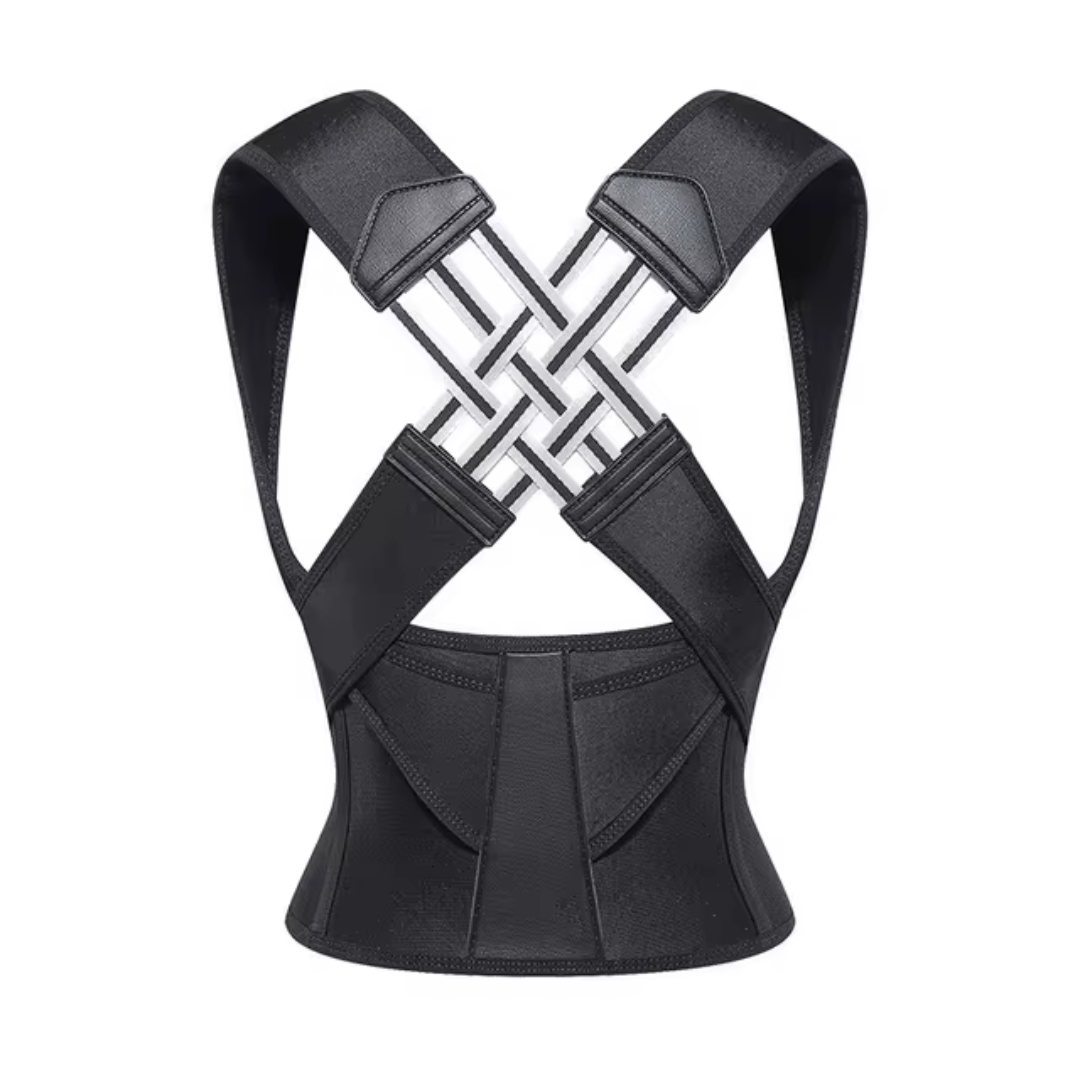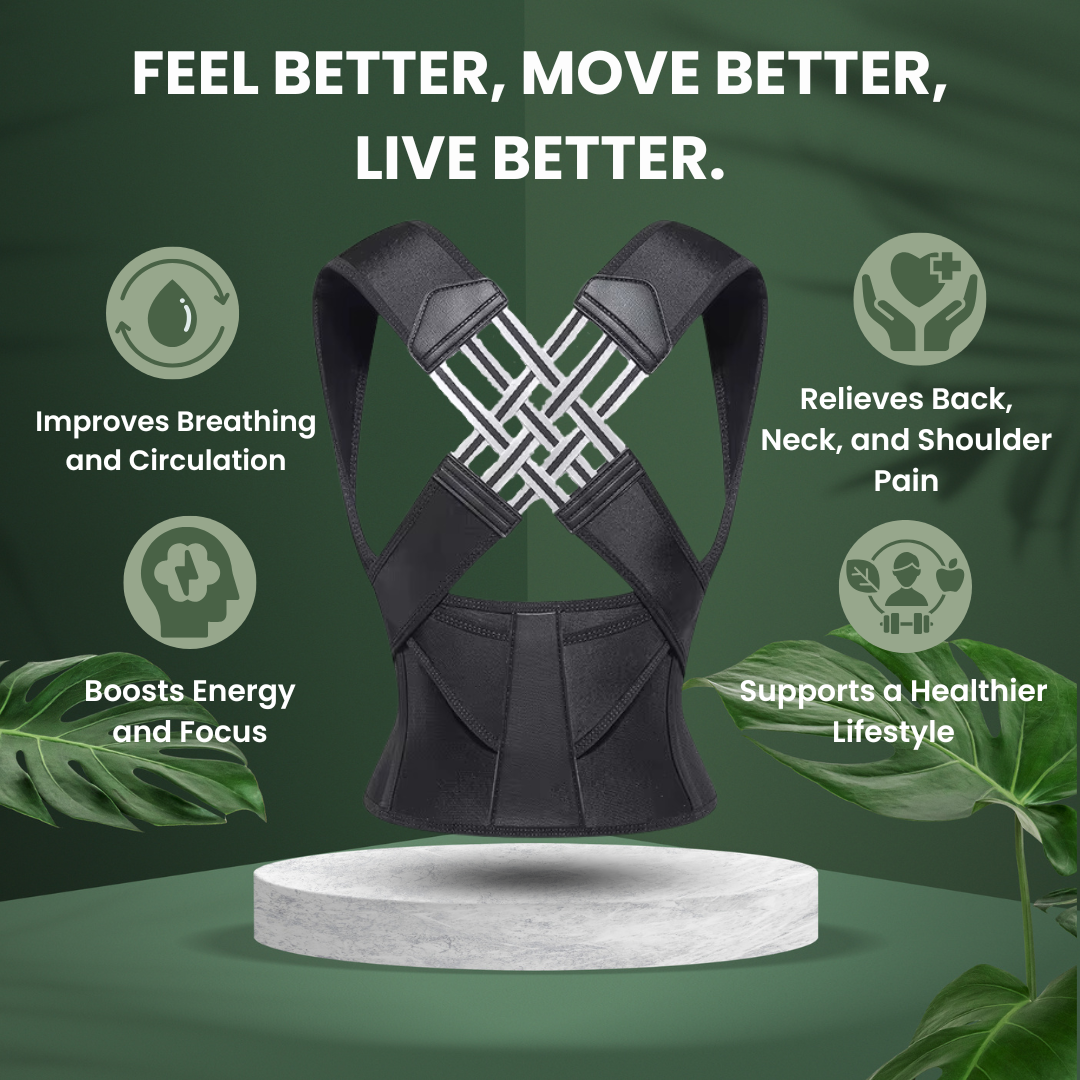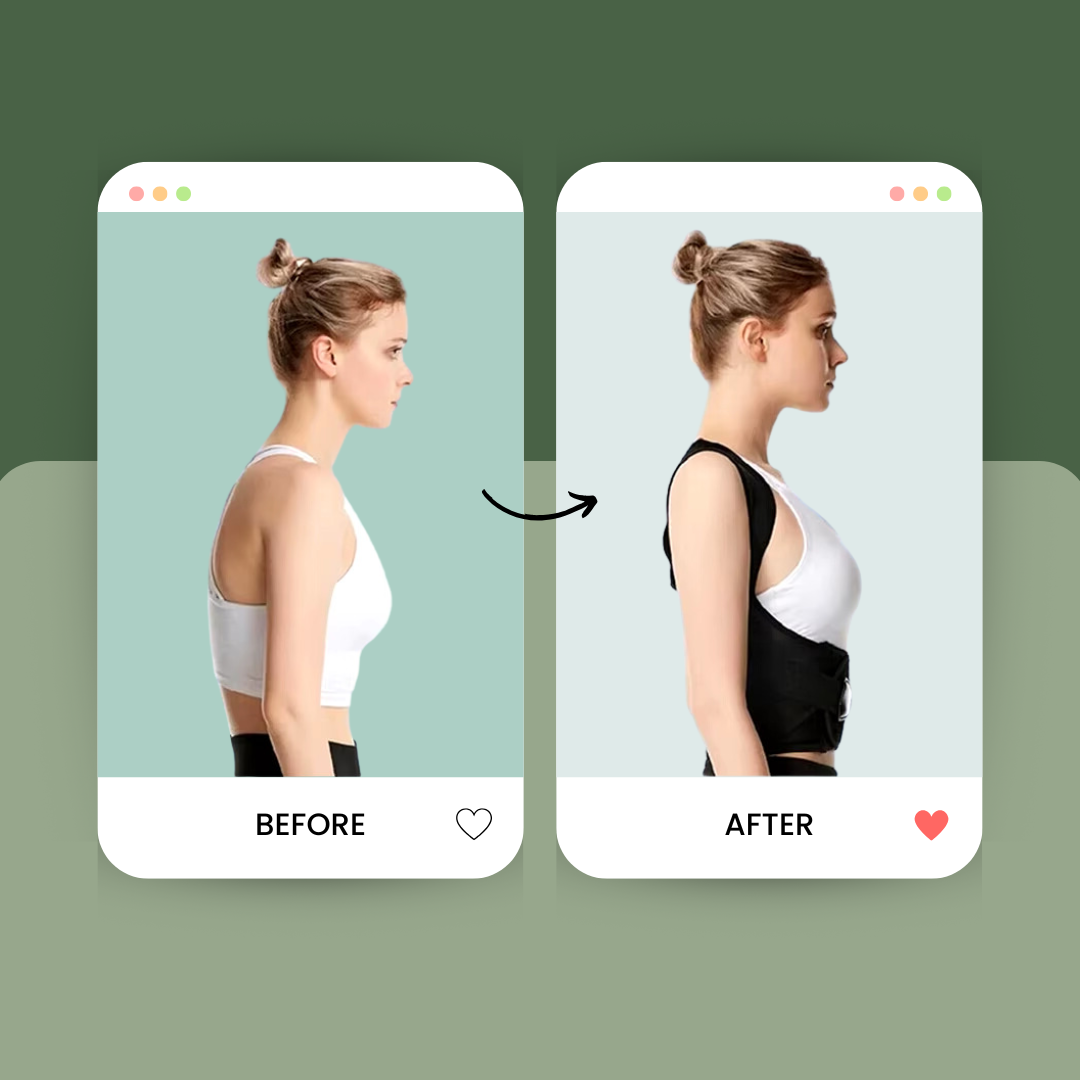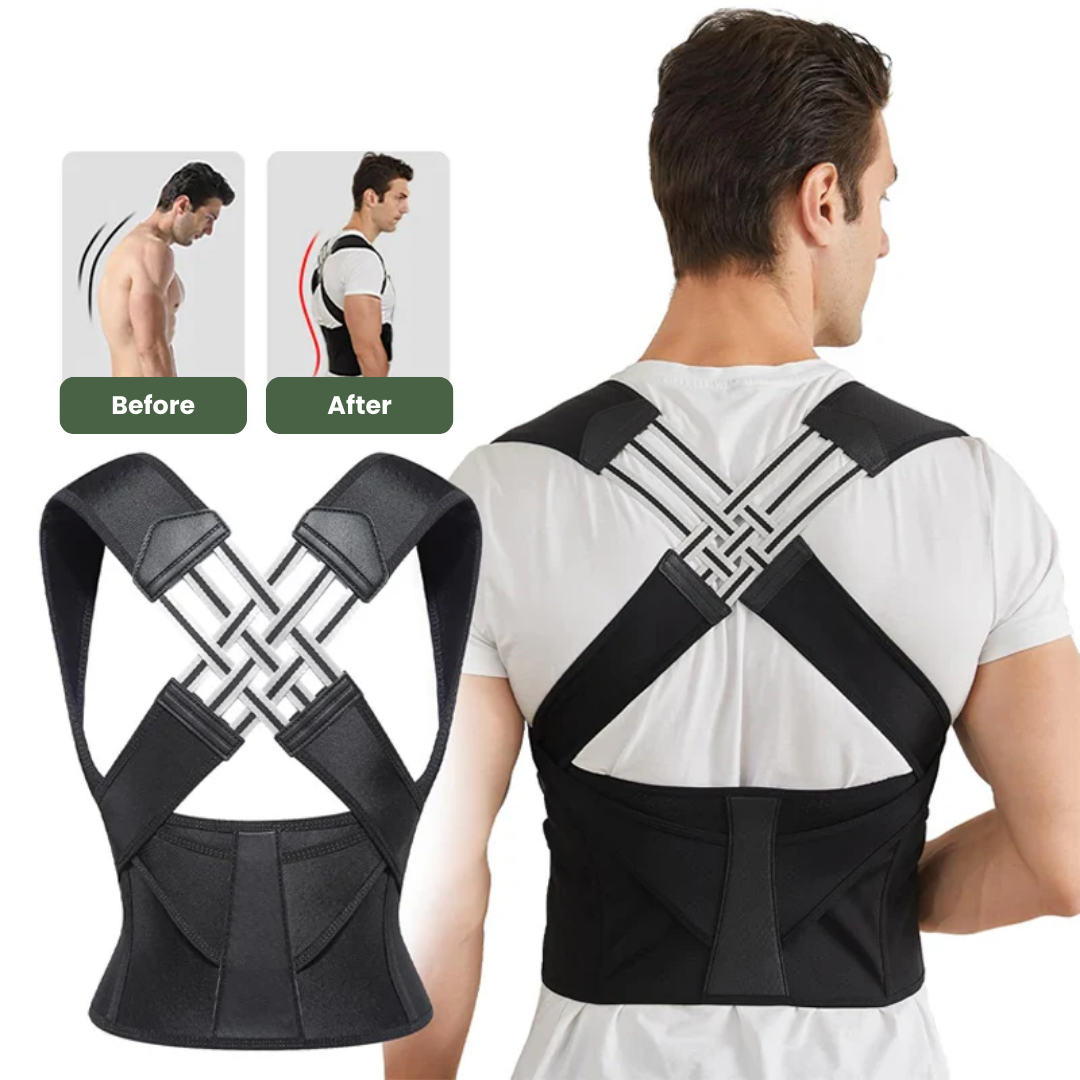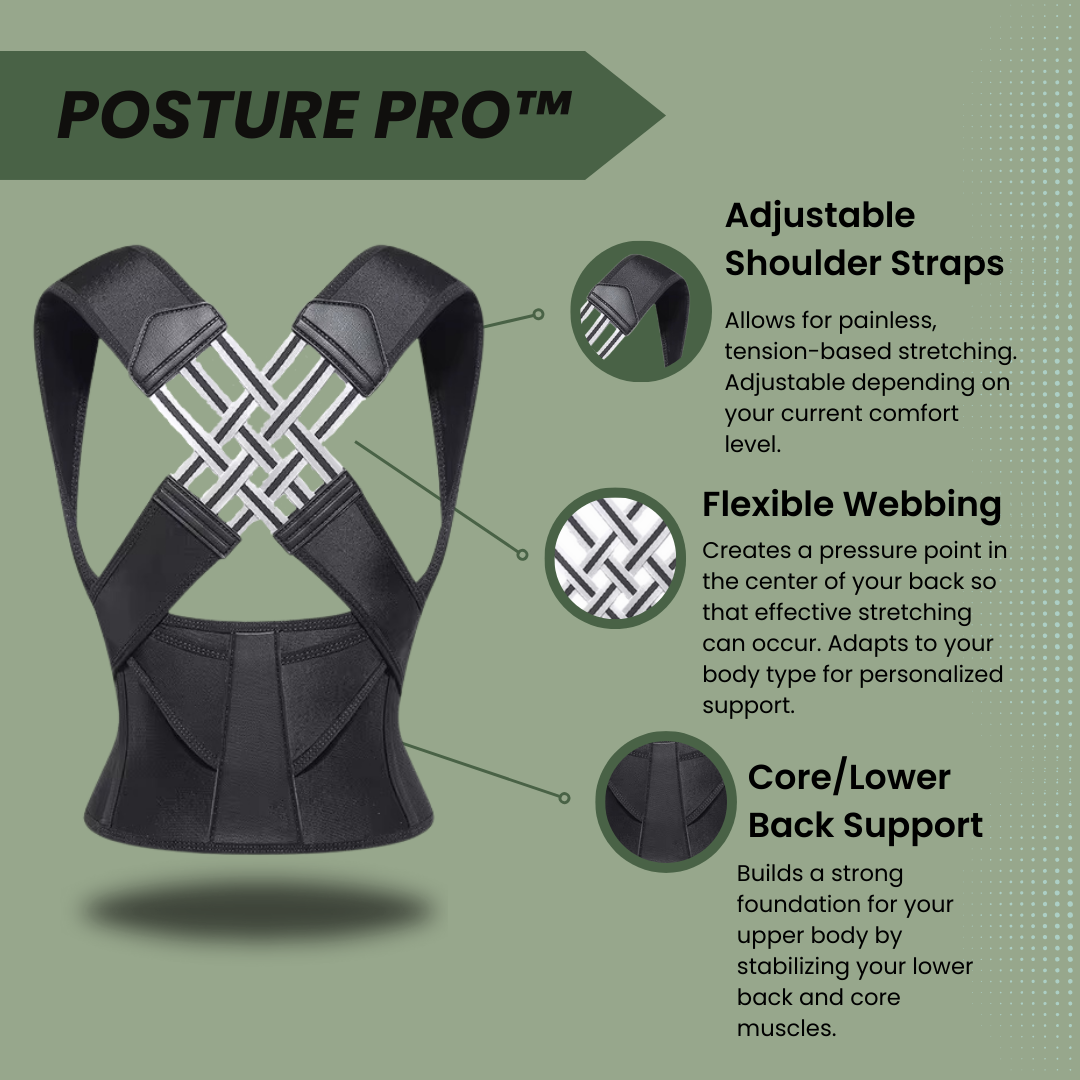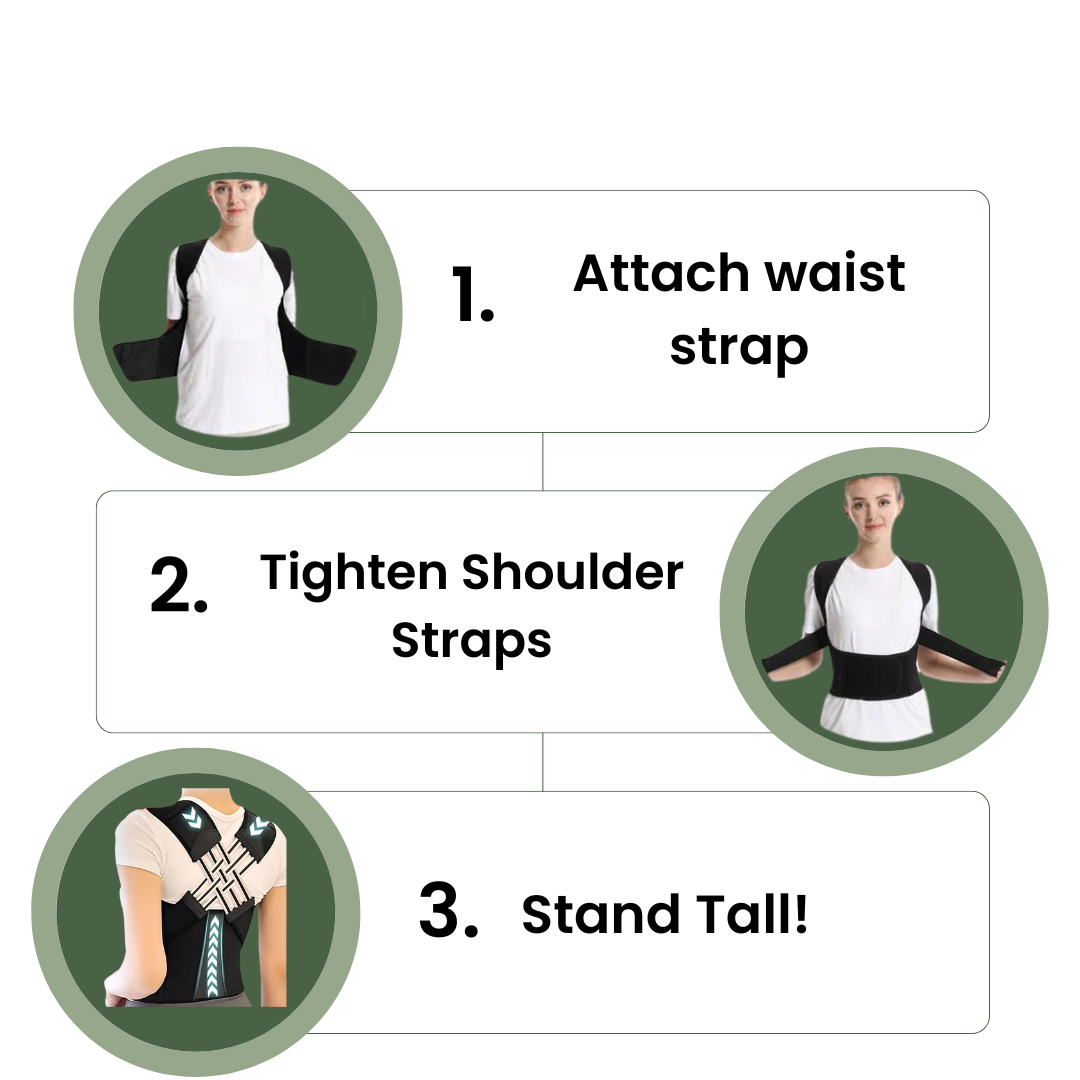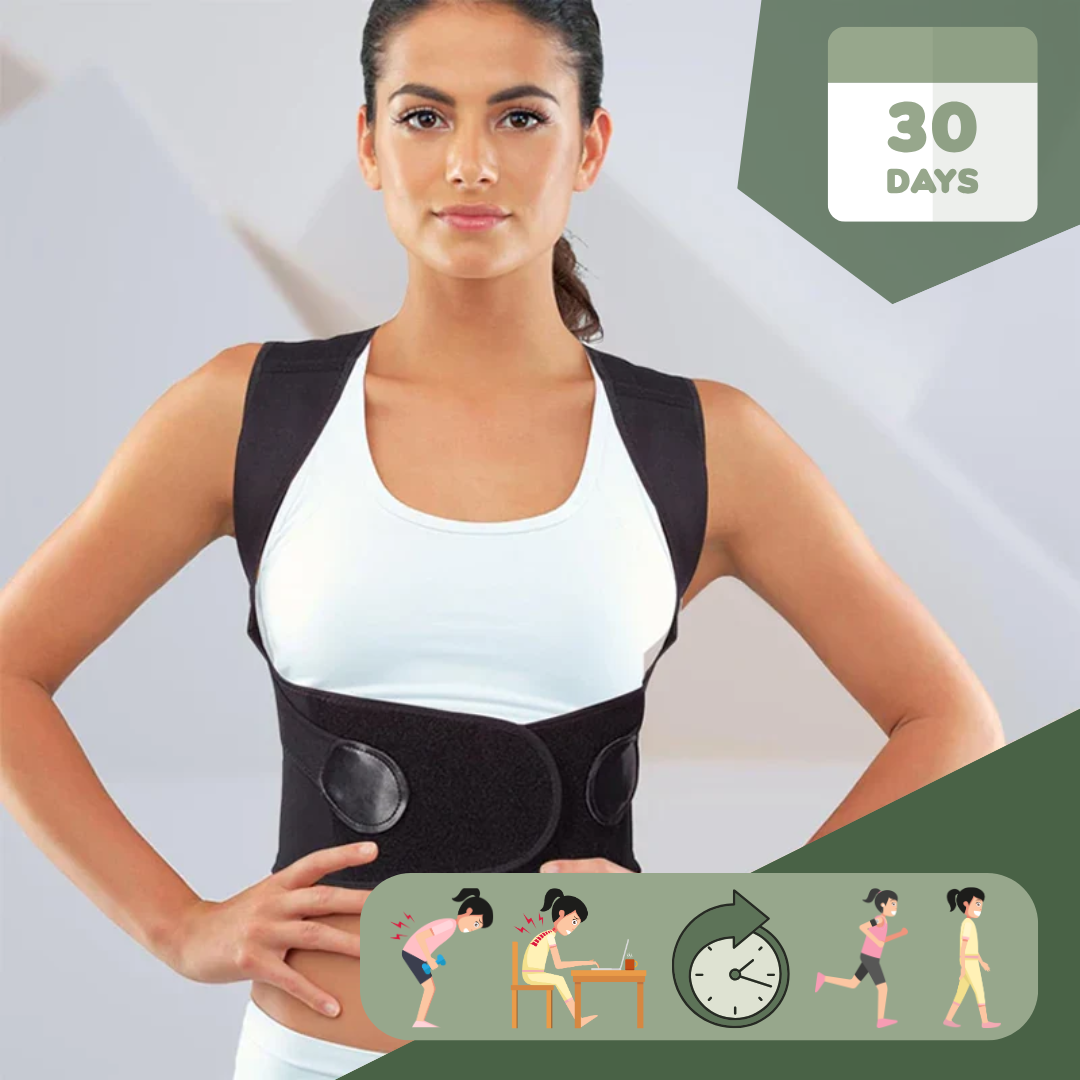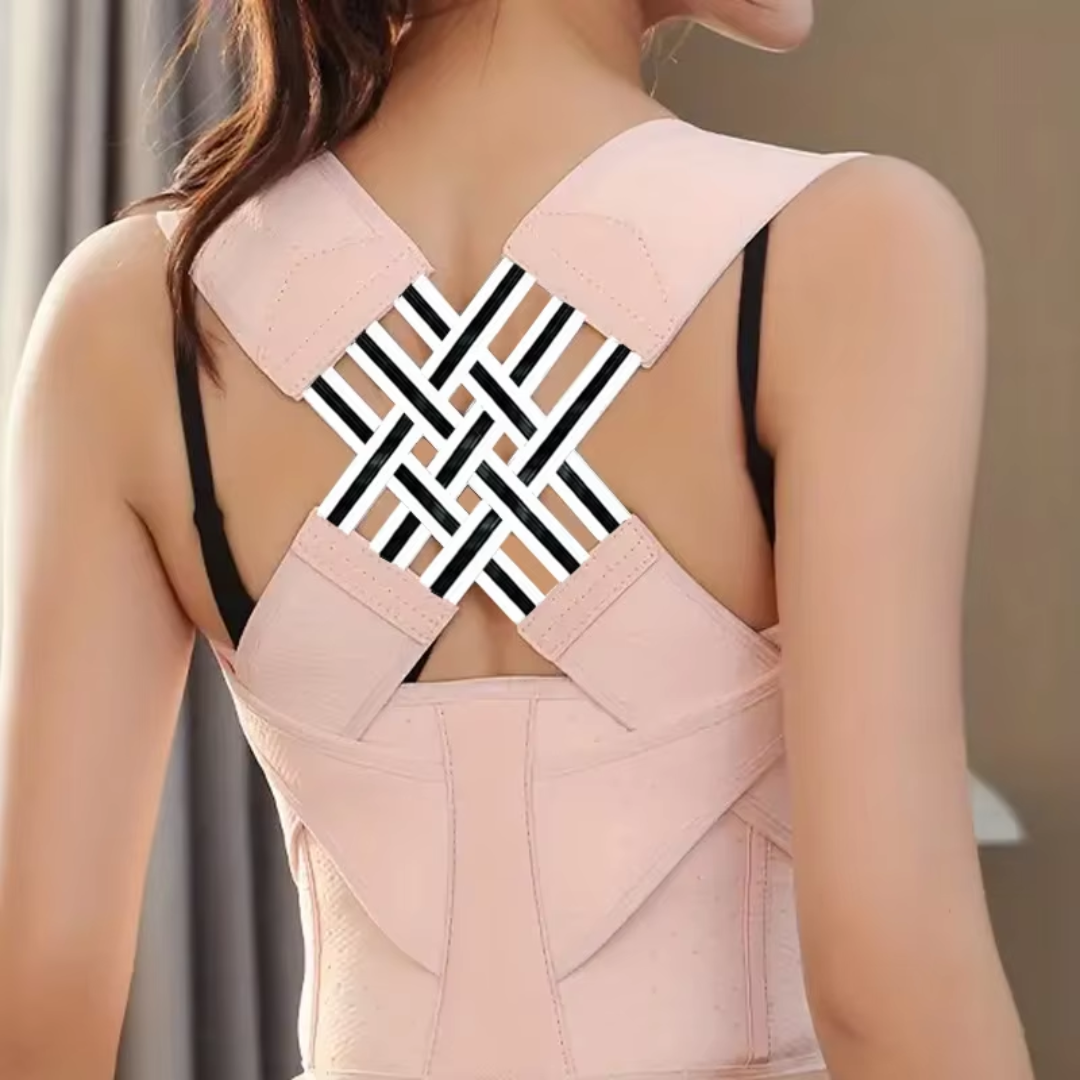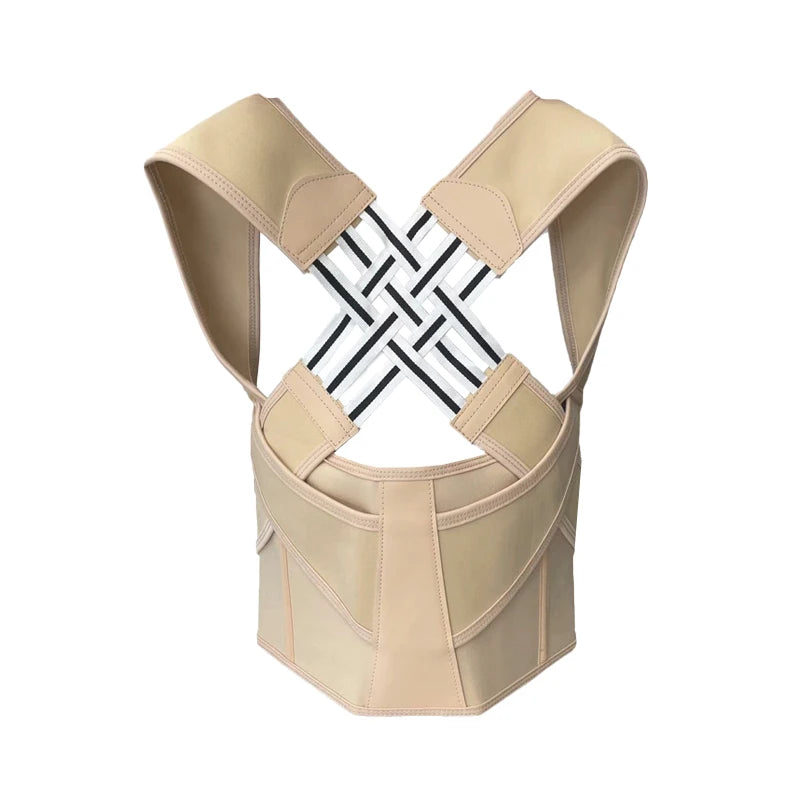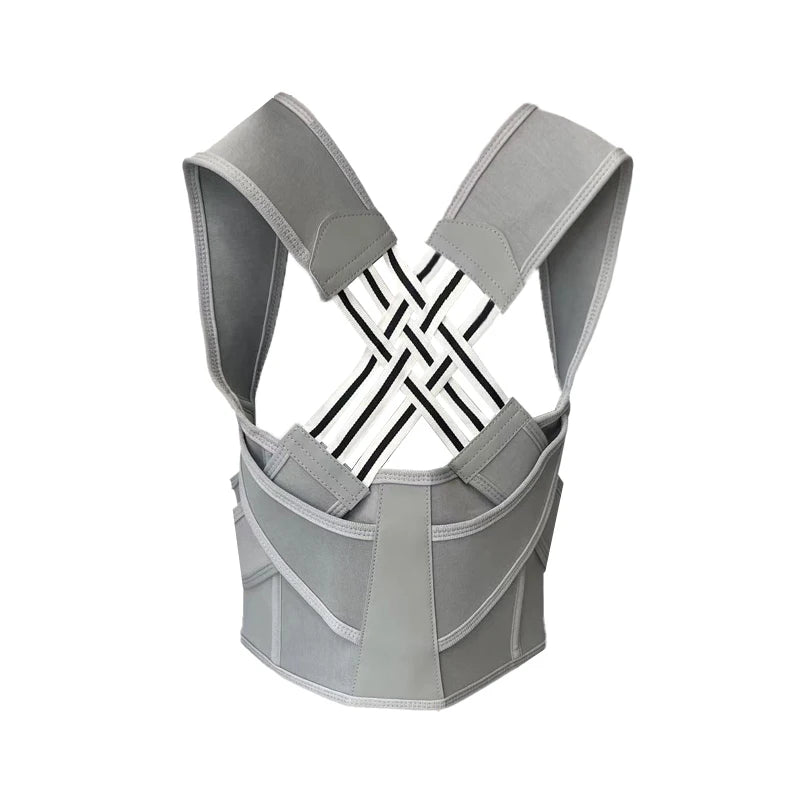Many people sit a lot every day. This can hurt how straight they stand or sit. Our blog talks about if posture correctors are good. Keep reading to learn more.
Key Takeaways
- Posture correctors help make your back straight and can reduce pain by reminding you to sit or stand properly. They work by giving gentle pressure.
- Wearing them too much might make your muscles weak because they rely on the support. It's best to use them for short times and not all day.
- To really fix posture, it's good to do exercises that make back muscles strong, adjust your workspace to be better for your body, and sometimes see a therapist for special help.
- Not all posture problems are fixed by these devices. Severe issues need more help from doctors or physical therapists.
- Starting slow with posture correctors and slowly wearing them longer helps avoid discomfort. Mixing their use with exercises is very effective.
What Are Posture Correctors?
Posture correctors are devices made to help fix your posture. They come in different forms like harnesses, shirts with special panels, or gadgets that vibrate to remind you to sit up straight.
These tools aim to retrain your muscles by making you more aware of how you hold your body.
Posture correctors work by enhancing proprioception, improving how we sense our body's position.
These tools can be simple straps you wear around your shoulders or high-tech wearables that track how you stand and sit. They target muscle imbalances caused by sitting too long or slouching.
Using these devices helps bring your spine into a natural alignment, teaching your muscles the right way to support your body throughout the day.
How Do Posture Correctors Work?
Posture correctors are tools that remind your body to maintain a straight position. They apply a mild pressure on specific portions of the back and shoulders. This encourages you to keep your spine properly aligned.
The corrector accomplishes this by repositioning your shoulders and aligning the spine. It behaves as a non-verbal hint against slouching.
Utilizing a posture corrector can also condition your muscles over time. If you wear it regularly, starting with 15–20 minutes initially, then gradually increasing as you become comfortable, your muscles adapt to support you upright without the brace.
Its function is somewhat similar to training wheels on a bicycle; they are present until you acquire sufficient balance to not require them.
Benefits of Using Posture Correctors

Using posture correctors can lead to: better spinal alignment, less back and neck pain, improved muscle memory for posture, and they are convenient to use. Interested in learning more?
Improved spinal alignment
Wearing posture correctors helps your spine stay straight. This is good for your back's health. A straight spine leads to less pain in the neck, upper back, and lower back. It also fixes muscle imbalances from sitting or standing wrong for too long.
Good spinal alignment is key for a strong back. Posture correctors push your shoulders back and remind your body how it should stand or sit. Over time, this can teach your muscles to hold you upright on their own, even without the posture corrector.
This means better posture habits in the long run.
Reduction in back and neck pain
Posture correctors can assist in reducing back and neck discomfort by encouraging better spinal alignment. According to a study in Heliyon 2022, using posture correctors during work-from-home practices has demonstrated enhancements in musculoskeletal symptoms from device usage.
Suboptimal posture can result in discomfort and pain in the lower back, shoulders, upper back, and neck. Therefore, embracing tools like posture correctors alongside regular exercise is recommended for enhancing posture and relieving musculoskeletal discomfort effectively.
Chiropractic adjustments are also advised to ensure proper spine alignment, which contributes to reduced back and neck discomfort. Incorporating therapeutic exercises along with the use of ergonomic adjustments tailored to individual needs can help in preventing and alleviating such issues as well.
Enhanced muscle memory for better posture
Posture correctors assist in enhancing muscle memory for improved posture. They teach the body to maintain proper alignment, which can result in decreased back and neck discomfort.
Proper posture is associated with benefits such as increased vitality and decreased muscle tension. It is advisable to use them for a limited duration (one hour a day) to prevent muscle weakness.
Initial discomfort is typical as the body adjusts and strengthens gradually. Gradual adjustment, coupled with exercises and stretches, are essential for effectively using posture correctors.
Experts suggest alternative approaches like therapeutic exercises or ergonomic adjustments to workspaces for overall postural enhancement. Ensuring a proper fit for your posture corrector and making necessary adjustments for comfort while wearing it are pivotal.
By integrating these methods, individuals can cultivate improved muscle memory, resulting in better posture and reduced discomfort related to poor alignment.
Convenient and easy to use
Posture correctors are designed to be user-friendly, allowing for effortless integration into daily routines. These devices offer adjustable designs to ensure a comfortable fit for various body types, and they can be discreetly worn under clothing.
They provide gentle reminders to maintain proper posture without causing inconvenience, making them hassle-free solutions for individuals seeking postural improvement. Posture correctors also require manageable wear time, enabling users to gradually adapt to their use without disrupting their everyday activities.
The convenient nature of posture correctors lies in their ability to provide physiological feedback while being inconspicuous and adaptable. This feature allows users to effortlessly incorporate these devices into their everyday lives without feeling burdened by complex adjustments or prolonged discomfort.
Therefore, individuals looking for an accessible way to enhance their posture may find posture correctors an easy-to-use tool in achieving better spinal alignment and reducing back and neck pain efficiently.
Drawbacks of Posture Correctors
Posture correctors might lead to muscle dependency if worn for extended periods. They may not be very effective for severe posture issues.
May cause muscle dependency
Excessive reliance on posture correctors might lead to muscle dependency, which means that your muscles could start depending on the device rather than working naturally. This can hinder the development of natural muscle engagement and strength over time.
To prevent this, it's important to limit the duration of posture corrector usage each day and gradually transition away from using them altogether.
This is imperative as a prolonged dependency on these devices may weaken your muscles in the long run, making it more challenging to maintain proper posture without their assistance.
Therefore, it's crucial to strike a balance by using them for short durations while focusing on exercises and techniques aimed at strengthening your muscles for sustainable postural improvement.
Limited effectiveness for severe posture issues
Severe posture issues may not derive substantial benefits from posture correctors. There is a lack of conclusive data on which type works best for severe issues, making it challenging to recommend one with certainty.
Moreover, relying solely on these devices for severe problems might be inadequate and could potentially lead to dependency without addressing the root cause.
It's essential to approach severe posture issues comprehensively, seeking advice and treatment from healthcare professionals such as physical therapists or spine surgeons. While posture correctors may offer some support, they are unlikely to provide a complete solution for severe conditions and should be used in conjunction with other targeted interventions.
Potential discomfort with prolonged use
Prolonged use of posture correctors may result in discomfort, particularly if not used gradually. Beginning with 15-20 minutes daily and gradually increasing to 30-60 minutes can help prevent strain and discomfort.
It's important to be aware that relying too much on posture correctors could impede natural muscle engagement, potentially leading to over-reliance and dependence on the device. Proper adaptation is crucial as it helps retrain muscles for better posture without causing discomfort.
To prevent potential discomfort with prolonged use, it's recommended to follow gradual adaptation guidelines and ensure proper fitting and adjustment when using a posture corrector.
Moreover, combining its usage with exercises and stretches can further optimize muscle engagement while reducing the risk of discomfort.
How to Use Posture Correctors Effectively
To use posture correctors effectively, begin by gradually wearing them to prevent strain. Combine their use with exercises and stretches to strengthen muscles. Ensure proper fitting and adjustment for maximum benefit.
Gradual adaptation to avoid strain
Using posture correctors requires gradual adaptation to avoid strain. Start with 15 to 20 minutes of daily use, then increase usage slowly as comfort improves. It is recommended to gradually increase usage from the initial 15–20 minutes daily to 30–60 minutes.
Starting with short periods helps the body adjust without causing strain or discomfort. It's important not to rush this process and allow your body time to adapt at its own pace. By following this method, you can effectively integrate posture correctors into your routine without risking muscle strain or dependency.
Combining with exercises and stretches
When using posture correctors, it's important to pair them with exercises and stretches. This combination helps strengthen the muscles that support good posture while improving flexibility.
Integrating exercises such as yoga, Pilates, or simple daily stretches can aid in building muscle memory and improving postural awareness. In addition, focusing on core-strengthening exercises alongside these stretches can further contribute to maintaining better posture throughout the day.
It's recommended to seek advice from a physical therapist for a personalized exercise routine that complements the use of posture correctors effectively.
By incorporating regular stretching and targeted exercises into your routine, you can enhance the benefits gained from using a posture corrector while promoting long-term postural improvement.
Keep in mind that gradual adaptation and consistency in integrating these activities are crucial for achieving positive results in correcting poor posture habits.
Proper fitting and adjustment
When using posture correctors, it's vital to ensure they are properly fitted and adjusted. Adjustable straps play a crucial role in achieving a comfortable and effective fit. It's recommended to start with 15-20 minutes of use daily, gradually increasing the duration to 30-60 minutes over time for optimal results.
Individuals with severe misalignment should seek advice from healthcare providers before using posture correctors.
For successful usage, gradual adaptation is key to avoid strain. It's advisable to combine the use of posture correctors with exercises and stretches for enhanced effectiveness. The fitting and adjustment process is essential for experiencing the benefits of improved spinal alignment, reduced back and neck pain, as well as developing better postural habits.
Alternatives to Posture Correctors
As alternatives to posture correctors, one can consider therapeutic exercises, ergonomic adjustments to workspaces, and professional physical therapy. These options provide holistic approaches to improving posture and addressing underlying musculoskeletal issues.
Therapeutic exercises
Therapeutic exercises play a pivotal role in enhancing posture and addressing muscle imbalances. Straightforward exercises like shoulder blade retractions, neck retractions, and wall slides aid in correcting rounded shoulders and forward head position.
Moreover, core strengthening routines such as planks and deadbugs improve spinal stability to counter the impact of poor sitting habits.
Regular stretching can effectively alleviate muscle tightness associated with poor posture. Examples include chest openers to counteract hunching and hip flexor stretches to balance out extended periods of sitting.
Incorporating these exercises alongside lifestyle adjustments fosters superior postural habits, reducing the likelihood of musculoskeletal issues while bolstering overall physical well-being.
Ergonomic adjustments to workspaces
When organizing your workspace, consider making ergonomic adjustments to support your musculoskeletal health. Place your monitor at eye level to reduce strain on your neck and use an adjustable chair to support proper posture.
Utilize a keyboard tray or wrist rest to maintain a neutral wrist position while typing, reducing the risk of repetitive strain injuries. Moreover, integrating lumbar support in your chair can help maintain the natural curve of your lower spine, promoting better sitting posture and overall comfort.
These simple adjustments can significantly contribute to reducing discomfort and promoting spinal health during long work hours.
Integrate these ergonomic tools into your workspace: an adjustable chair with lumbar support, a monitor stand for eye-level positioning, a keyboard tray or wrist rest for neutral wrist alignment, and adequate lighting to reduce eye strain.
By prioritizing ergonomics in your workspace setup, you can create a more comfortable environment that supports optimal posture and reduces the risk of musculoskeletal issues associated with prolonged desk work.
Professional physical therapy
Professional physical therapy, often recommended by experts like Christina Markar, DC and Kevin Lees, DC, plays a crucial role in addressing posture issues. It involves customized exercises and techniques to strengthen muscles and improve spinal alignment.
By integrating specialized therapeutic exercises under the guidance of a doctor of physical therapy, individuals can effectively target muscle imbalances contributing to poor posture.
This personalized approach ensures that treatment is crafted to optimize posture habits while also catering to any existing musculoskeletal conditions or limitations. Additionally, this hands-on experience with a certified specialist allows for targeted care that adapts to each individual's unique needs and goals.
Moreover, professional physical therapy explores the world of ergonomic workspace adjustments which are essential for maintaining good posture during daily activities. Ergonomics experts help navigate through intricacies related to creating an efficient work environment by tailoring furniture setups towards better postural awareness and positioning.
This includes making ergonomic adjustments such as proper chair height settings, desk ergonomics supporting spinal health, or implementing adjustable straps on office chairs to promote healthy sitting postures – all aimed at unveiling the keys to sustaining good posture amid sedentary lifestyles prevalent in contemporary society.
Conclusion
In conclusion, posture correctors can be beneficial for improving spinal alignment and reducing back and neck pain. However, it's important to use them effectively by gradually adapting to avoid muscle dependency.
Incorporating posture-strengthening exercises alongside using a corrector is crucial for long-term benefits. There are also alternative approaches like therapeutic exercises and ergonomic adjustments that can complement the use of posture correctors.
Ultimately, the key is to find the right balance between using these devices and developing overall postural awareness through a holistic approach that includes exercise, ergonomic considerations, and maintaining an active lifestyle.
FAQs
1. What are posture correctors and how do they work?
Posture correctors, also known as back braces or wearable devices, are designed to support the musculoskeletal system by promoting good posture habits. They help align your spine and train your postural muscles, improving both standing and sitting posture.
2. Can posture correctors relieve back pain?
Yes, many people use posture correction devices such as a lumbar support or a back brace for relief from lower back pain, neck pain, and headaches caused by poor spinal alignment due to bad posture.
3. Are all posture correctors equally effective?
No two bodies are alike; hence not every device will be suitable for everyone. Some may find an adjustable straps model more comfortable while others might prefer shoulder straps design. It's best to consult with professionals like physical therapists or chiropractors before purchasing one from places such as Amazon.com.
4. How long should I wear a posture corrector each day?
The duration varies depending on individual needs and advice from health professionals but typically it's worn for short periods during the day to enhance muscle memory without causing muscle imbalances.
5. Will wearing a posture corrector help improve my rounded shoulders condition?
Indeed! Posture correction devices can aid in correcting rounded shoulders by encouraging proper spinal curvature which is crucial for overall spinal health.


